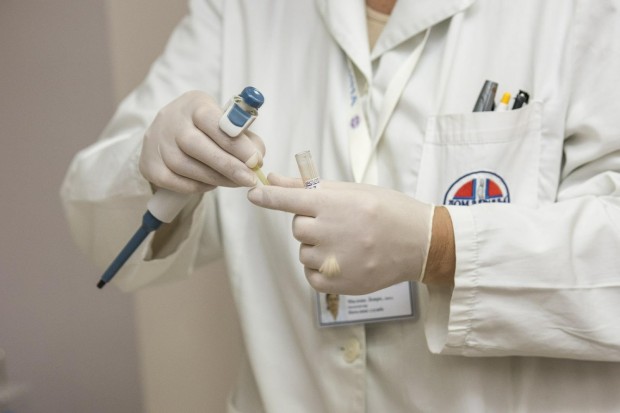New Head & Neck Cancer Trial Data Highlights Opportunity for Immunotherapy
A newly published report on the National Institute of Health U.S. National Library of Medicine ClinicalTrials.gov database highlights the potential for immunotherapy as a treatment for cancer patients with head and neck cancer.
The data reported by CEL-SCI Corporation showed a positive result in the largest ever head and neck Phase 3 clinical trial. The study is known as the IT-MATTERS study (Efficacy and Safety Study of Leukocyte Interleukin, Injection (LI) to Treat Cancer of the Oral Cavity).
CEL-SCI Corporation is a clinical stage biotechnology company developing immunotherapy treatments for cancer and infectious diseases. They conducted the largest ever Phase 3 head and neck cancer study.
Previously some of the trial's results were published in two peer-reviewed abstracts and a poster at the ASCO conference in June 2022 with additional results expected to be published in scientific journals and presented in scientific forums in the future.
IT-MATTERS Study Results
Results of the 10-year IT-MATTERS pivotal Phase 3 clinical trial in head and neck cancer with the company's investigational immunotherapy drug Multikine (Leukocyte Interleukin, Injection) have been posted on clinicaltrials.gov per U.S. government requirements.
The study confirmed that a 3-week treatment with Multikine provided an objective response before surgery with statistically significant five-year overall survival rate benefit for patients deemed by the NCCN Guidelines as lower risk of recurrence and who should receive radiotherapy without chemotherapy following surgery.
The data provides a much more detailed look at the Phase 3 study, evaluating Multikine as a neoadjuvant therapy (given prior to surgery and other standard of care treatments) in patients with operable squamous cell carcinoma of the head and neck. The study was conducted at over 100 sites in more than 30 countries totaling 923 patients.
The greatest benefit in the results was seen when Multikine was administered as the first therapy after diagnosis. In these cases it demonstrated objective complete and partial responses before surgery in 8.5% of the overall ITT population and in 16.0% of all Multikine-treated patients (+/- CIZ) in the lower-risk-for-recurrence treatment arm.
The company explained that a partial response is defined as a tumor that has been reduced by at least 30%, and a complete response means that the tumor has completely disappeared. The objective tumor responses were noted within three-weeks of the beginning of Multikine treatment up to surgery and provided direct evidence of Multikine's anticancer activity.
What Does The Multikine Data Mean
Based on the most recent data, what the results mean is that for every 100 patients who would receive Multikine (if approved) followed by surgery and radiotherapy only, the likelihood is that about 14 more people would be alive at 5-years compared to the existing SOC.
There are an estimated 210,000 advanced primary squamous cell carcinoma of head and neck (SCCHN) patients globally that could be eligible for Multikine treatment.
Based on the total population size, the overall survival rate of Multikine demonstrated in the IT-MATTERS study could mean nearly 30,000 patients could see an extension of their lives at a post-therapy 5-year point as compared to the current cancer standard of care. A major victory for CEL-SCI and immunotherapy as a whole.
The Need For Change in Cancer Treatment
As noted in their latest press release, CEL-SCI is unaware of any existing therapy that provides complete or partial tumor responses within three-weeks of treatment before surgery for locally advanced primary SCCHN, much less objective responses before surgery that are prognostic/predictive of longer survival, as seen in the IT-MATTERS study.
They also outlined how Multikine differs from existing therapies. Multikine is designed to be administered locally first, immediately following diagnosis, to patients whose tumors and any involved lymph nodes are slated for surgical resection with "intent-to-cure" SOC and have not yet been previously treated. The key is Multikine must come first and ideally as soon as possible after diagnosis.
Multikine's Proposed Indication would be for previously untreated, locally advanced primary SCCHN patients scheduled for surgery and radiation without chemotherapy, encompassing about 40% of the entire advanced primary SCCHN population.
The company believes that the Phase 3 trial results will support a Biologics Licensing Application to the FDA which will ultimately review the safety and efficacy of the product before granting regulatory approval.
See Now: NASA's Juno Spacecraft's Rendezvous With Jupiter's Mammoth Cyclone
* This is a contributed article and this content does not necessarily represent the views of scienceworldreport.com





Join the Conversation